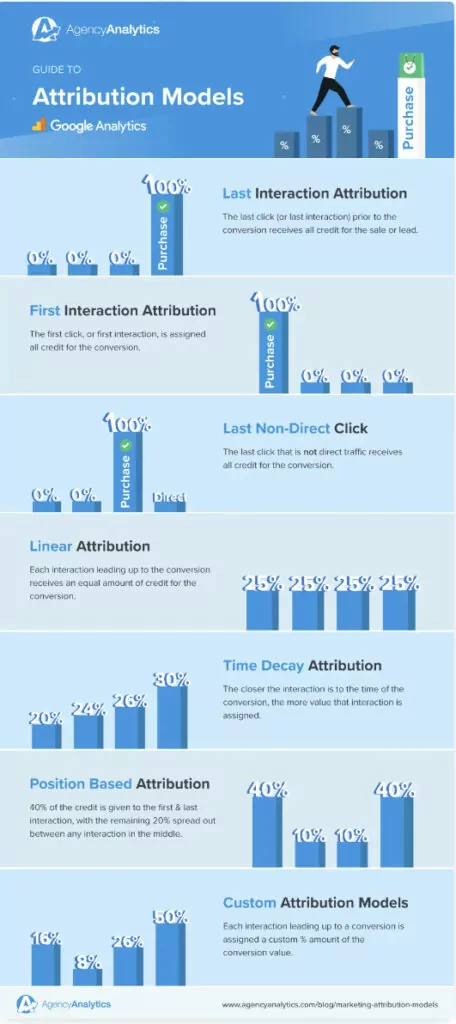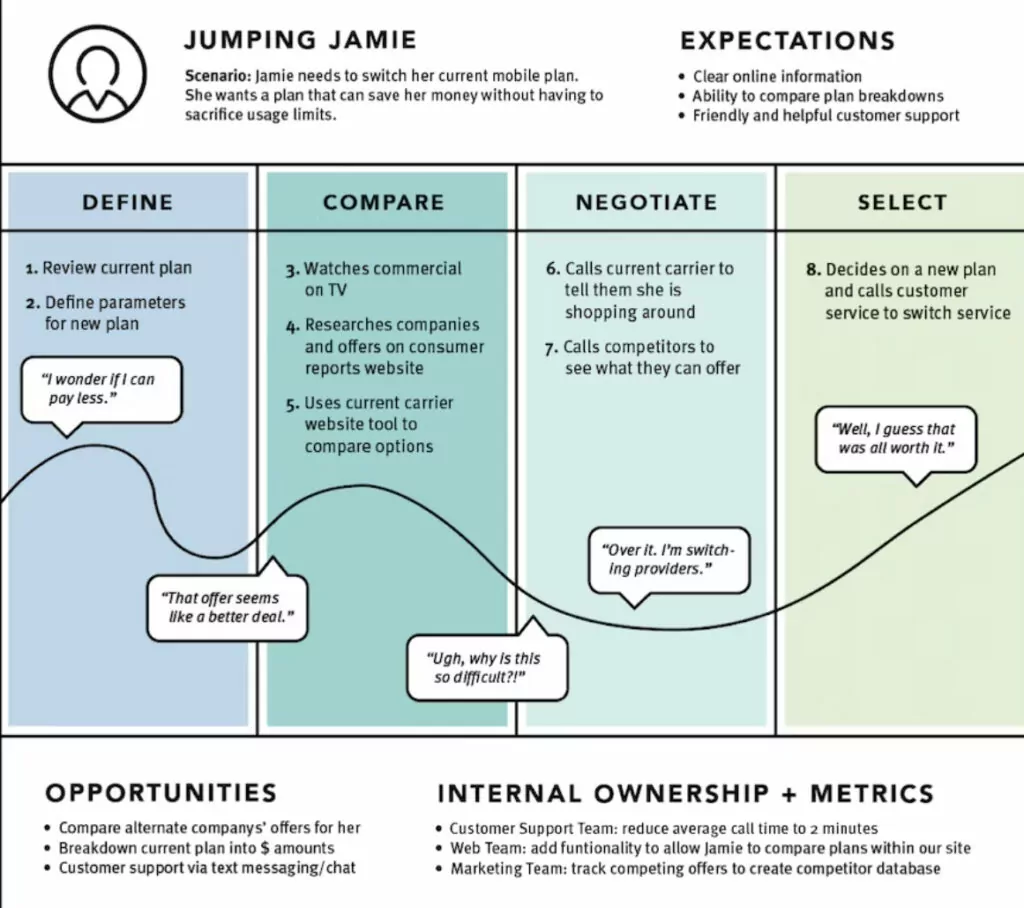When you use a multichannel marketing strategy, you also complicate how to calculate each channel’s value. For example, just because someone purchased a product from your e-commerce store doesn’t mean your e-commerce site deserves full credit. That same customer might have first seen an ad on Google before visiting your social media and ultimately ending on your e-commerce store. A marketing attribution model ensures you assign value to all relevant touchpoints.
Learn how to build a marketing attribution model that accurately reflects the contribution of each of your channels in your omnichannel marketing strategy.
Key Takeaways:
- Marketing attribution models assign value to each stage in a buyer’s journey according to its position and impact.
- Use lead tracking software to accurately measure the impact of each touchpoint and create a customized model.
- Create several attribution models to account for your multi-location marketing strategy.
What Is a Marketing Attribution Model?
Marketing attribution is assigning value to different touchpoints along the buyer’s journey to determine which of your marketing efforts have the most significant impact on a sale. A marketing attribution model is a specific method for distributing value according to each touchpoint’s location in the journey and impact on the decision.
Establishing an attribution model should be part of every marketing strategy since 73% of consumers shop on multiple channels. Marketing attribution models can identify where you should invest your greatest marketing spend. It also helps you calculate your ROI for individual channels to improve your marketing budget plans.
Types of Marketing Attribution Models
The following six attribution models are the primary ways marketers assign value to their touchpoints:
- Last Interaction Attribution: You give full purchase credit to the last touchpoint.
- First Interaction Attribution: You give full purchase credit to the first touchpoint.
- Last Non-Direct Click: The last non-direct traffic click receives full purchase credit.
- Linear Attribution: You assign equal credit to all touchpoints.
- Time Decay Attribution: You assign increasingly more credit to each touchpoint the closer it occurred to the purchase.
- Position-Based Attribution: You give the first and last touchpoints most of the credit while evenly distributing the rest of the credit between the middle touchpoints.
These models rely on a set system and don’t account for slight variances in the buyer’s journey or factors that might influence the impact of specific touchpoints, like a negative experience. While you can use these quick and straightforward models for general attribution, you will see more accurate values when you create a custom attribution model that assigns a customized value to each touchpoint.
Source: Agency Analytics
4 Tips to Build a Marketing Attribution Model
Use these four tips to build a custom attribution model with the greatest accuracy.
1. Track Your Leads
The foundation of attribution modeling is knowing the channels involved in a customer’s experience. Each customer interaction is a touchpoint that contributed to their opinion of your brand and eventually led them to purchase from your company. Some examples of touchpoints include:
- Seeing an ad
- Contacting customer service
- Receiving a call from your company
- Visiting or interacting with a social media post
- Visiting your website
- Receiving and reading emails
- Visiting a physical franchise location
- Attending a webinar
Some touchpoints, such as in-store visits, are more challenging to track unless you establish outside methods for identifying these leads. For instance, using loyalty points or encouraging your leads to create a free account are ways to track that lead when they interact or purchase from your brand. In a survey, you might also ask them to specify which touchpoints influenced their purchase decision.
2. Map Your Customer’s Journey
The data you collected on your leads are what you will use to create a customer journey map. A customer journey map is a visual representation of all their touchpoints and interactions with your brand. Each map follows the typical journey of an individual that represents a large segment of your customers.
It can help you identify the most effective channels and where potential weaknesses lie. However, in this case, it can tell you what touchpoints contributed to a sale. In addition to identifying the touchpoints, it also considers the customer’s feelings when interacting with them.
For example, if a customer called customer service but left a negative review about that interaction, that shouldn’t receive any credit for their final purchase. However, if that same customer later emailed customer service and left a five-star review, that interaction should receive greater attribution.
When creating your attribution model, you should consider each touchpoint and the customer’s reaction.
Source: 99Designs
3. Customize Your Attribution Model
If you want the most accurate distribution of value among your touchpoints, you should customize your attribution model.
First, consider what part of the customer’s journey you want to include in the attribution model. For example, do you want to track from the first interaction until a sale, or do you only want to track from their first interaction until they became a lead? Then you can create a separate model from lead generation until a sale.
The second option breaks up your model into further segments, which can improve the accuracy of your attribution versus trying to cover the entire sales cycle.
Another area to consider customizing is how much value each touchpoint receives. The six standard models assign value based on a touchpoint’s position and don’t consider an actual touchpoint’s impact. For example, a customer that schedules a demo should receive more significant attribution than a customer that liked a social media post due to different buyer’s intent.
4. Continually Optimize Your Model
Attribution is not an evergreen strategy. Instead, it requires continual optimization to stay relevant to the latest trends. You may even need to design several customized models for each different franchise to account for unique marketing channels in your multi-location marketing strategy.
Once you have created your models, continue to collect data on your customers and their journey. As the customer’s journey changes, so should your models so you can accurately account for the impact each touchpoint has on their purchase.
Track Your Leads More Accurately
MXTR can help you design an attribution model by tracking your leads across your franchises. You will never lose another lead again but can capture each touchpoint and interaction and use that data to design a custom marketing attribution model to improve your ROI calculations and strategies.
Schedule a demo and learn more about our marketing automation solutions.
Featured Image: istockphoto









